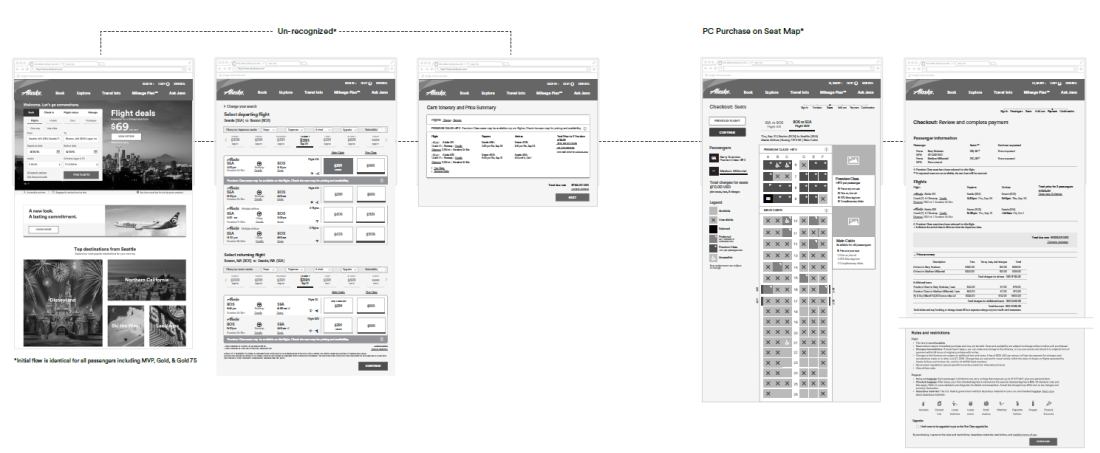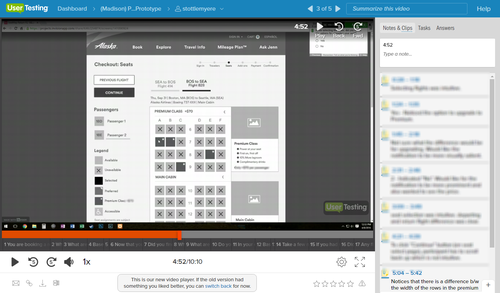Crafting a new premium experience for Alaska Air.
context & process
Alaska Airlines offered two classes--Main Cabin and First Class--for many years. Business leaders determined there was a market for a premium economy seat (more legroom, products and services than Main). This premium economy product--to be called Premium Class--was a great value, and its successful launch was extremely important for the business.
Launching and selling a product as substantial as Premium Class is more complicated than a typical e-commerce initiative. First, airline purchases need to accommodate frequent flyers whose status may provide a complimentary upgrade, and precise deliverable milestones are needed to ensure crew are trained, certifications in place, and airplanes configured in time for product release. To address the need to accommodate frequent flyers, I had the design team start the project designing for two unique personas developed in a complementary project--an elite traveler (Barry) and an infrequent but indulgent traveler (Madison). We talked through the needs of each persona to center this design activity on the needs of particular travelers.
On the project management side, I had the team start with the assumption that we'd deliver a near-term experience for the product's launch, but that there would be additional experiences to add after launch. To that end, I had the team focus on two threads: experiences for each persona, as well as experiences for the near-term and the long-term.
Project design process
The process I built for this project.
low-fidelity flows
The first step was to work through the discovery and purchase flows for both the key personas.
user interface concepts
Once we felt confident with the flows, we began adding details to the concepts to allow us to user test them and gather stakeholder feedback. Here’s a wireframe a designer created to facilitate testing.
evaluation
User testing
We conducted dozens of moderated and unmoderated usability testing sessions to ensure people understood the experience, how to pay/upgrade themselves to it, etc. These tests used participants who aligned to the personas we based the project on.
outcome
The product was successfully launched in December of 2015, and featured the ability for customers to learn about and purchase it in checkout, upgrade to it after checkout, or opt into it as a frequent flyer upgrade. My team also created website experiences to market the product.
purchase experience
User Interface for seat map purchase. When a customer selects a Premium Class seat, s/he can see the cost of that upgrade at the left (pricing for Premium Class is variable based on route/demand).
new web pages/marketing
My team also designed the online marketing of the product.
launch
The product launched successfully, and garnered the attention of the national news:
"[Jerrod] is the kind of manager every designer seeks. He appreciates his designers and provides thoughtful, actionable feedback. His approach to critique and feedback was to continually encourage personal and professional growth, which created an environment of mutual respect. While proactively empowering each and every team member, he has worked hard to create a high performing team that works well together to tackle all manner of design problems. He effectively represents his team and design as a whole to leadership and other disciplines, which has in turn resulted in collaboration across aisles that previously would not have occurred."
--Senior UX Designer, Alaska Airlines








